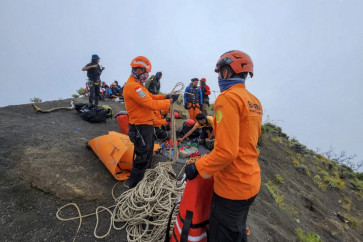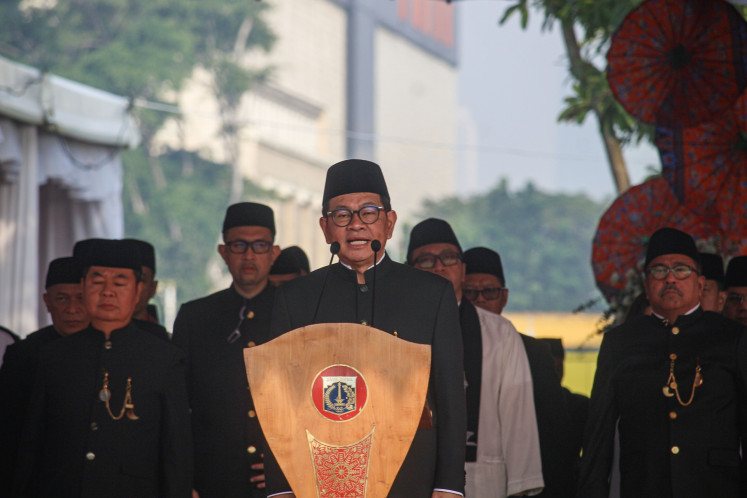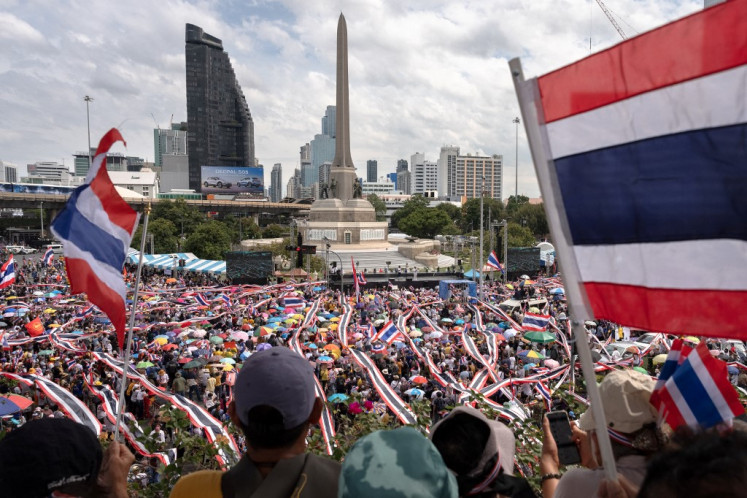Popular Reads
Top Results
Can't find what you're looking for?
View all search resultsPopular Reads
Top Results
Can't find what you're looking for?
View all search resultsLocals nix ‘pyramid’ dig near Cianjur
Local residents say they will sue if archaeologists continue excavating the Gunung Padang megalithic site, about 60 kilometers southwest of Cianjur, West Java
Change text size
Gift Premium Articles
to Anyone

L
ocal residents say they will sue if archaeologists continue excavating the Gunung Padang megalithic site, about 60 kilometers southwest of Cianjur, West Java.
A spokesman said that continued digging might damage the site, under which is reportedly buried a giant pyramid along with evidence of prehistoric people.
“What the team does will only damage the historical site,” community council spokesman Eka Santosa told The Jakarta Post in Bandung, West Java, on Friday.
Eka said that the council would not let the terraced grave site — the largest in Southeast Asia — suffer the same fate as Batutulis in Bogor, West Java, which was damaged by diggers in 2002 looking for buried treasure.
Gunung Padang measures 900 square meters in Karyamukti subdistrict in Campaka. It sits at over 850 meters above sea level.
“The Sundanese community was traumatized by the Batutulis experience,” Eka said.
Eka called on the archaeological team to respect Sundanese culture, history and rituals, especially as there were many who believed in mysticism (kejawen) and performed rituals at the site.
“Respect to our tradition rather than spending billions of rupiah of the state’s money,” Eka said.
Separately, Imam Haris, who has been following the planned dig, said that the site would not be damaged.
The team had a permit from the Education and Culture Ministry to look for a buried pyramid at the site where people might have taken shelter during a natural disaster, Imam, who was formerly head of Cianjur regency’s Culture and Tourism Agency, said.
He added that the team started work at the site in November, looking to date soil based on geo-electric and geo-radar tests, which required digging a hole 25 centimeters wide and 20 meters deep.
“We, the Cianjur regency administration, gave a permit for the research, because the team already had a permit from the deputy minister,” Imam said.
The team had funded Rp 200 million (US$21,600) for the project out of its own pockets.
“It’s not billions as reported in the media. The hole as well has been refilled,” he said.
On Friday, according to Imam, the team briefed local NGOs, student organizations and the Indonesian Ulema Council (MUI) on the next phase of the project, slated to run from June 25 to 30.









